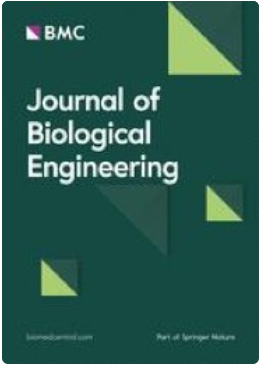Promoting osteogenesis and bone regeneration employing icariin-loaded nanoplatforms
IF 5.7
3区 生物学
Q1 BIOCHEMICAL RESEARCH METHODS
引用次数: 0
Abstract
There is an increasing demand for innovative strategies that effectively promote osteogenesis and enhance bone regeneration. The critical process of bone regeneration involves the transformation of mesenchymal stromal cells into osteoblasts and the subsequent mineralization of the extracellular matrix, making up the complex mechanism of osteogenesis. Icariin’s diverse pharmacological properties, such as anti-inflammatory, anti-oxidant, and osteogenic effects, have attracted considerable attention in biomedical research. Icariin, known for its ability to stimulate bone formation, has been found to encourage the transformation of mesenchymal stromal cells into osteoblasts and improve the subsequent process of mineralization. Several studies have demonstrated the osteogenic effects of icariin, which can be attributed to its hormone-like function. It has been found to induce the expression of BMP-2 and BMP-4 mRNAs in osteoblasts and significantly upregulate Osx at low doses. Additionally, icariin promotes bone formation by stimulating the expression of pre-osteoblastic genes like Osx, RUNX2, and collagen type I. However, icariin needs to be effectively delivered to bone to perform such promising functions. Encapsulating icariin within nanoplatforms holds significant promise for promoting osteogenesis and bone regeneration through a range of intricate biological effects. When encapsulated in nanofibers or nanoparticles, icariin exerts its effects directly at the cellular level. Recalling that inflammation is a critical factor influencing bone regeneration, icariin's anti-inflammatory effects can be harnessed and amplified when encapsulated in nanoplatforms. Also, while cell adhesion and cell migration are pivotal stages of tissue regeneration, icariin-loaded nanoplatforms contribute to these processes by providing a supportive matrix for cellular attachment and movement. This review comprehensively discusses icariin-loaded nanoplatforms used for bone regeneration and osteogenesis, further presenting where the field needs to go before icariin can be used clinically.利用负载冰片的纳米平台促进成骨和骨再生
对有效促进成骨和加强骨再生的创新策略的需求与日俱增。骨再生的关键过程包括间充质基质细胞向成骨细胞的转化以及随后细胞外基质的矿化,构成了复杂的成骨机制。淫羊藿苷具有多种药理特性,如抗炎、抗氧化和成骨作用,在生物医学研究中备受关注。淫羊藿素以其刺激骨形成的能力而闻名,研究发现它能促进间充质基质细胞转化为成骨细胞,并改善随后的矿化过程。多项研究都证明了冰醋酸的成骨作用,这可能是由于它具有类似激素的功能。研究发现,它能诱导成骨细胞中 BMP-2 和 BMP-4 mRNA 的表达,并在低剂量时显著上调 Osx。此外,冰醋酸还能刺激 Osx、RUNX2 和 I 型胶原蛋白等成骨前期基因的表达,从而促进骨形成。将冰醋酸封装在纳米平台中,有望通过一系列复杂的生物效应促进成骨和骨再生。封装在纳米纤维或纳米颗粒中的冰片苷可直接在细胞水平发挥效应。考虑到炎症是影响骨再生的关键因素,当把冰片苷封装在纳米平台中时,它的抗炎作用就能被利用和放大。此外,细胞粘附和细胞迁移是组织再生的关键阶段,而冰片苷负载的纳米平台可为细胞粘附和迁移提供支持基质,从而促进这些过程。这篇综述全面讨论了用于骨再生和成骨的冰片苷负载纳米平台,进一步介绍了冰片苷临床应用前该领域的发展方向。
本文章由计算机程序翻译,如有差异,请以英文原文为准。
求助全文
约1分钟内获得全文
求助全文
来源期刊

Journal of Biological Engineering
BIOCHEMICAL RESEARCH METHODS-BIOTECHNOLOGY & APPLIED MICROBIOLOGY
CiteScore
7.10
自引率
1.80%
发文量
32
审稿时长
17 weeks
期刊介绍:
Biological engineering is an emerging discipline that encompasses engineering theory and practice connected to and derived from the science of biology, just as mechanical engineering and electrical engineering are rooted in physics and chemical engineering in chemistry. Topical areas include, but are not limited to:
Synthetic biology and cellular design
Biomolecular, cellular and tissue engineering
Bioproduction and metabolic engineering
Biosensors
Ecological and environmental engineering
Biological engineering education and the biodesign process
As the official journal of the Institute of Biological Engineering, Journal of Biological Engineering provides a home for the continuum from biological information science, molecules and cells, product formation, wastes and remediation, and educational advances in curriculum content and pedagogy at the undergraduate and graduate-levels.
Manuscripts should explore commonalities with other fields of application by providing some discussion of the broader context of the work and how it connects to other areas within the field.
 求助内容:
求助内容: 应助结果提醒方式:
应助结果提醒方式:


